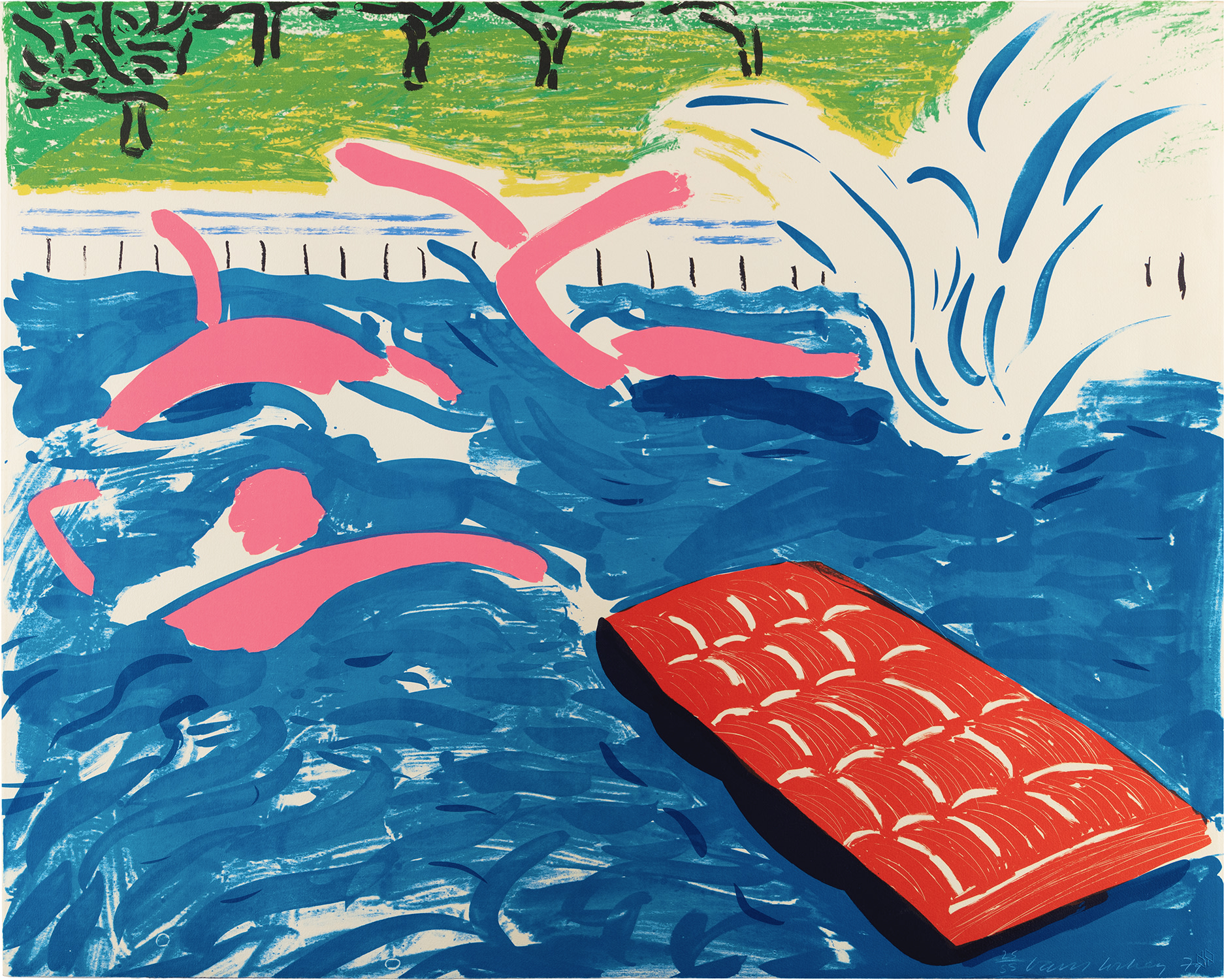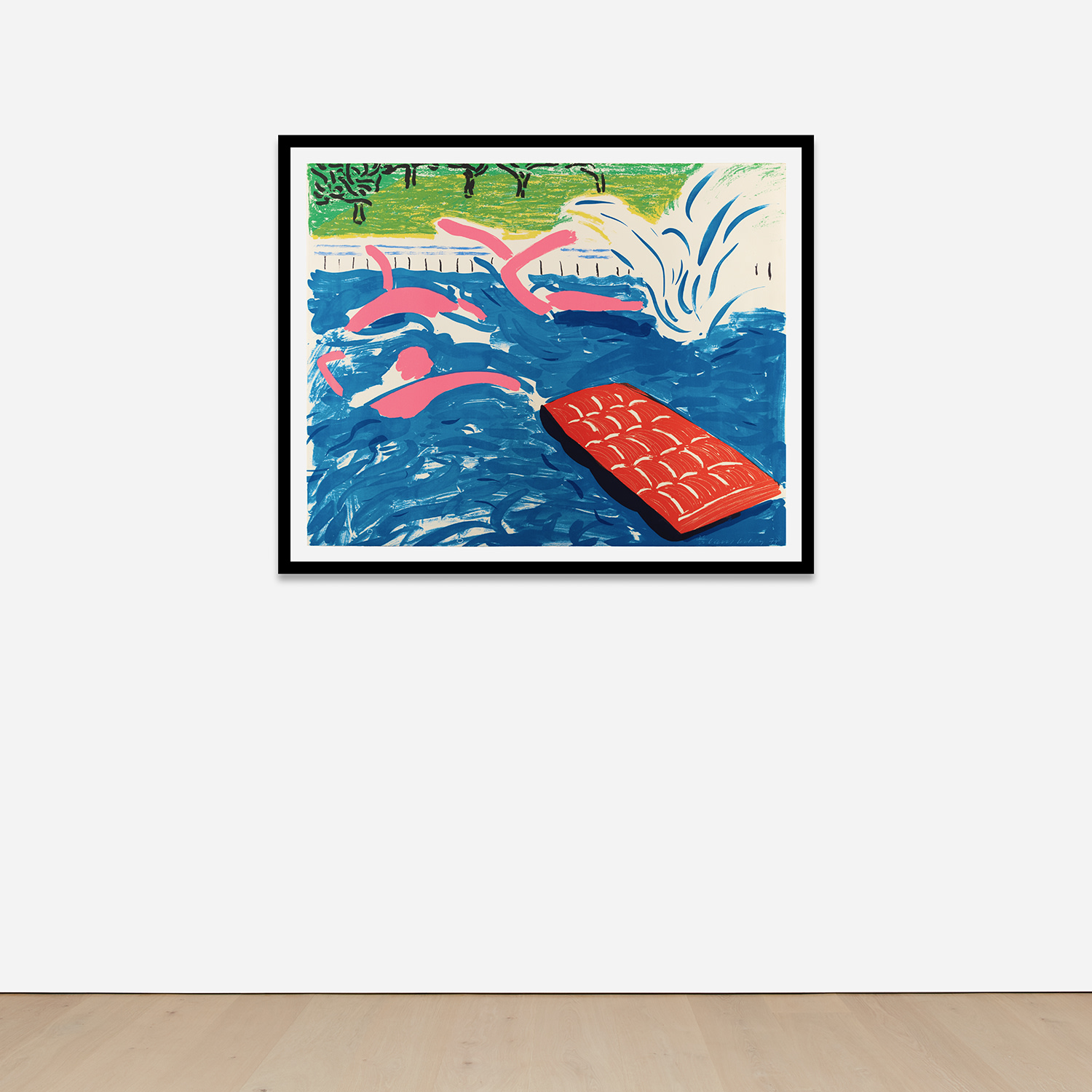



Property from the Stellenberg Collection, Cape Town
12
David Hockney
Afternoon Swimming (T.G. 266, M.C.A.T. 233, W.G. 87)
Lithograph in colours, on Arches Cover mould-made paper, the full sheet.
S. 80 x 100.6 cm (31 1/2 x 39 5/8 in.)
Signed, dated and numbered 25/55 in white pencil (there were also 18 artist's proofs), published by Tyler Graphics Ltd., Bedford Village, New York (with their blindstamp), 1980, framed.
Further Details
Full-Cataloguing
David Hockney
BritishDavid Hockney (b. 1937) is one of the most well-known and celebrated artists of the 20th and 21st centuries. He works across many mediums, including painting, collage, and more recently digitally, by creating print series on iPads. His works show semi-abstract representations of domestic life, human relationships, floral, fauna, and thechanging of seasons.
Hockney has exhibited at the Museum of Modern Art in New York, the Royal Academy of Arts in London, and the Van Gogh Museum in Amsterdam, among many other institutions. On the secondary market, his work has sold for more than $90 million.